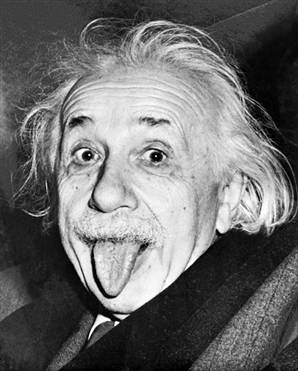

A
Abomination (Marvel)
Acolytes (Marvel)
Adam Warlock (Marvel)
Ahab (Marvel)
Angel (Marvel)
Annihilus (Marvel)
Ant Man (Marvel)
Apocalypse (Marvel)
Aquaman (DC Comics)
Arcade (Marvel)
Archangel (Marvel)
Avalanche (Marvel)
Avalon (Marvel)
Avengers (Marvel)
Azrael (DC Comics)
B
Bane (DC Comics)
Banshee (Marvel)
Baroness (Hasbro)
Batman (DC Comics)
Baxter Stockman (Mirage Studios)
Bazooka (Hasbro)
Beach Head (Hasbro)
Beast (Marvel)
Bebop (Mirage Studios)
Beetle (Marvel)
Beyonder (Marvel)
Bionic Commando (Capcom Co, Ltd.)
Bishop (Marvel)
Bizarro (DC Comics)
Black Knight (Marvel)
Black Panther (Marvel)
Black Widow (Marvel)
Blade (Marvel)
Blink (Marvel)
Blob (Marvel)
Blood Wraith (Marvel)
Brainiac (DC Comics)
Brood (Marvel)
Bullseye (Marvel)
C
Caliban (Marvel)
Callisto (Marvel)
Calypso (Marvel)
Cannonball (Marvel)
Captain Planet (TBS Productions, Inc.)
Cardiac (Marvel)
Carnage (Marvel)
Catwoman (DC Comics)
Cerise (Marvel)
Cesspool (Hasbro)
Chameleon (Marvel)
Cheetah (DC Comcis)
Clan Destine (Marvel)
Cloak and Dagger (Marvel)
Cobra (Hasbro)
Colossus (Marvel)
Copperhead (Hasbro)
Copycat (Marvel)
Corsair (Marvel)
Cyborg (DC Comics)
Cyclops (Marvel)
Cypher (Marvel)
D
Daredevil (Marvel)
Dazzler (Marvel)
Decepticon (Hasbro)
Devastator (Hasbro)
Diablo (Marvel)
Doctor Doom (Marvel)
Doctor Mindbender (Hasbro)
Doctor Octopus (Marvel)
Doctor Strange (Marvel)
Domino (Marvel)
Donatello (Mirage Studios)
Doomsday (DC Comics)
Doppelganger (Marvel)
Dreadnought (Marvel)
E
Electro (Marvel)
Elektra (Marvel)
Enchantress (Marvel)
Eradicator (DC Comics)
Excalibur (Marvel)
Exodus (Marvel)
F
Falcon (Marvel)
Fenris (Marvel)
Feral (Marvel)
Firefly (Hasbro)
Flash (DC Comics)
Foot Soldier (Mirage Studios)
Forge (Marvel)
Four Horsemen of Apocalypse (Marvel)
Frenzy (Hasbro)
G
G.I. Joe (Hasbro)
Galactus (Marvel)
Galvatron (Hasbro)
Gambit (Marvel)
Gargoyles (BVTV)
Generation X (Marvel)
Gideon (Marvel)
Gladiator (Marvel)
Goliath (BVTV)
Green Goblin (Marvel)
Grim Reaper (Marvel)
Guardian (Marvel)
Guile (Capcom Co, Ltd.)
Gung-Ho (Hasbro)
H
Harley Quinn (DC Comics)
Haven (Marvel)
Havok (Marvel)
Hawk (Hasbro)
Hawkeye (Marvel)
Hellions (Marvel)
Helspont (Image)
Hobogoblin (Marvel)
Holocaust (Marvel)
Homer Simpson (FOX)
Hulk (Marvel)
Huntress (DC Comics)
Husk (Marvel)
HYDRA (Marvel)
I
Iceman (Marvel)
Impulse (DC Comics)
Iron Fist (Marvel)
J
Jinx (Hasbro)
Joker (DC Comics)
Jubilee (Marvel)
Juggernaut (Marvel)
K
Kingpin (Marvel)
Kraven (Marvel)
L
Lamprey (Hasbro)
Leatherhead (Mirage Studios)
Leatherneck (Hasbro)
Leech (Marvel)
Leonardo (Mirage Studios)
Lilith (Marvel)
Living Tribunal (Marvel)
Lizard (Marvel)
Lobo (DC Comics)
Loki (Marvel)
Longshot (Marvel)
M
Maggott (Marvel)
Magik (Marvel)
Magneto (Marvel)
Mandarin (Marvel)
Marauders (Marvel)
Marrow (Marvel)
Marvel (Marvel)
Masque (Marvel)
Mastermind (Marvel)
Maverick (Marvel)
Medusa (Marvel)
Mega Man (Capcom Co, Ltd.)
Megatron (Hasbro)
Mephisto (Marvel)
Mercer (Hasbro)
Michaelangelo (Mirage Studios)
Mimic (Marvel)
Mirage (Marvel)
Mister Fantastic (Marvel)
Mister Freeze (DC Comics)
Mister Hyde (Marvel)
Mister Sinister (Marvel)
Mojo (Marvel)
Mole Man (Marvel)
Mondo Gecko (Mirage Studios)
Morbius (Marvel)
Morg (Marvel)
Muskrat (Hasbro)
mutant (Not Applicable)
Mysterio (Marvel)
Mystique (Marvel)
N
Namor (Marvel)
Napoleon Bonafrog (Mirage Studios)
Nebula (Marvel)
Nightcrawler (Marvel)
Nimrod (Marvel)
Nomad (Marvel)
Northstar (Marvel)
Nova (Marvel)
O
Omega Red (Marvel)
Onslaught (Marvel)
Orion (DC Comics)
P
Panda Khan (Mirage Studios)
Parasite (DC Comics)
Penance (Marvel)
Penguin (DC Comics)
Phalanx (Marvel)
Phoenix (Marvel)
Poison Ivy (DC Comics)
Polaris (Marvel)
Proteus (Marvel)
Prowler (Marvel)
Psyche-Out (Hasbro)
Puma (Marvel)
Punisher (Marvel)
Pyro (Marvel)
top of page
Q
Quasar (Marvel)
Quicksilver (Marvel)
R
Rage (Marvel)
Random (Marvel)
Raphael (Mirage Studios)
Rat King (Mirage Studios)
Ravage 2099 (Marvel)
Ray Fillet (Mirage Studios)
Reavers (Marvel)
Rhino (Marvel)
Rictor (Marvel)
Riddler (DC Comics)
Roadblock (Hasbro)
Robin (DC Comics)
Rogue (Marvel)
Rumble (Hasbro)
S
Sabretooth (Marvel)
Salacious Crumb (Lucasfilm Ltd.)
Sandman (Marvel)
Saracen (Marvel)
Sasquatch (Marvel)
Sauron (Marvel)
Savage Land (Marvel)
Scarecrow (DC Comics)
Scarlet Witch (Marvel)
Scorpion (Marvel)
Sentinel (Marvel)
Serpentor (Hasbro)
Shazam (DC Comics)
Shiva (Marvel)
Shockwave (Hasbro)
Shredder (Mirage Studios)
Siege (Marvel)
Silver Samurai (Marvel)
Silver Surfer (Marvel)
Siryn (Marvel)
Slapstick (Marvel)
Sleepwalker (Marvel)
Snake-Eyes (Hasbro)
Solo (Marvel)
Spartan (Image)
Spawn (Image)
Speedball (Marvel)
Spider-Man (Marvel)
Spirit (Hasbro)
Steel (DC Comics)
Storm (Marvel)
Stormtrooper (Lucasfilm Ltd.)
Stryfe (Marvel)
Sunspot (Marvel)
Superman (DC Comics)
Synch (Marvel)
T
Tempo (Marvel)
Thanos (Marvel)
Thing (Marvel)
Thor (Marvel)
Thunderbird (Marvel)
Thunderbolts (Marvel)
Tick (Ben Edlund)
Toad (Marvel)
Tombstone (Marvel)
Triceraton (Mirage Studios)
Two-Face (DC Comics)
Typhoid Mary (Marvel)
Tyrant (Marvel)
U
Ultron (Marvel)
Union Jack (Marvel)
V
Vengeance (Marvel)
Venom (Marvel)
Vertigo (Marvel)
Vindicator (Marvel)
Violator (Image)
Viper (Hasbro)
Vision (Marvel)
Vulture (Marvel)
W
Warpath (Marvel)
Wasp (Marvel)
Weapon Omega (Marvel)
Widget (Marvel)
Wolfsbane (Marvel)
Wolverine (Marvel)
Wonder Woman (DC Comics)
Wrecker (Marvel)
X
X-Cutioner (Marvel)
X-Cutioner’s Song (Marvel)
X-Factor (Marvel)
Xi’an (Marvel)
Y
Yakoo the Friendly Bacteria (LES)
Z
Zealot (Image)


.jpg)











